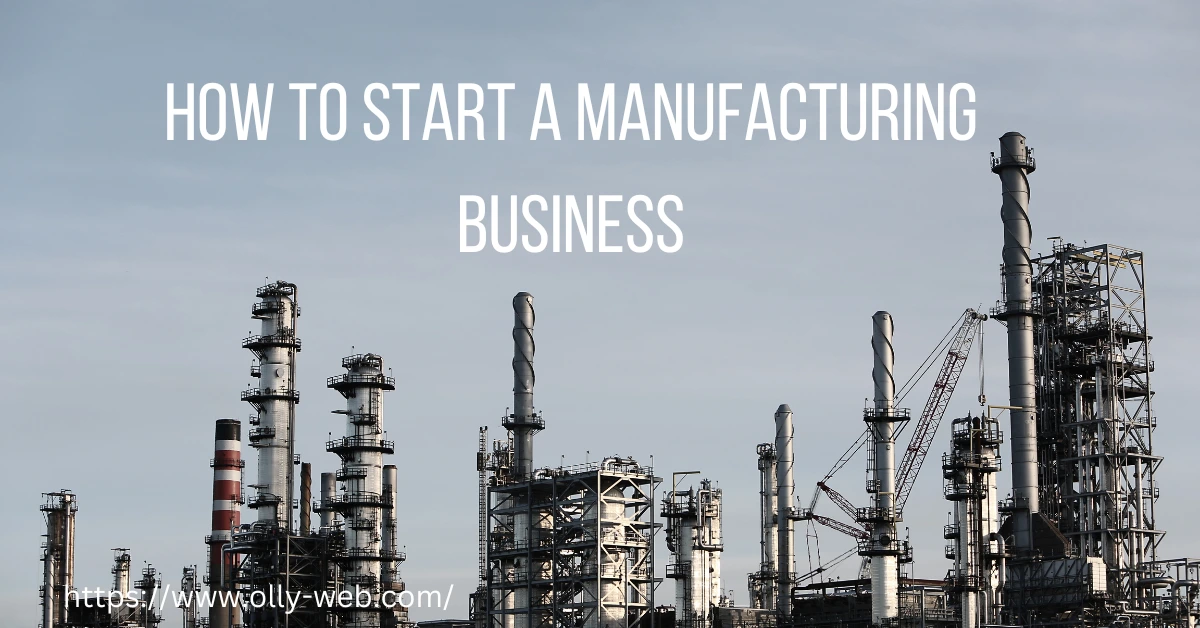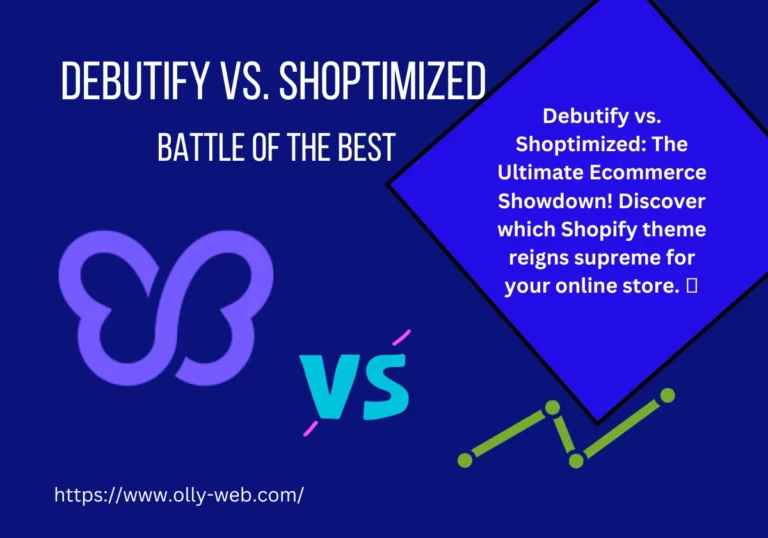How to Start a Manufacturing Business – A Complete Guide

Starting a manufacturing business is an exciting and risky endeavor because it allows you to be your own boss, develop your own unique products, and potentially reap large financial rewards. Today, we will be discussing how to start a manufacturing business while going into all details you need to know to get started. However, getting your manufacturing firm off the ground calls for much planning, preparation, and flexibility to adjust to changing circumstances.
In this post, we'll go through what it takes to launch a manufacturing business, from coming up with a product idea and writing a business plan to scout out a suitable location, buying machinery and supplies, recruiting workers, and advertising your brand.
Strategy and Preparation
It is important to perform your research and ensure that your manufacturing business idea is practical and marketable before you launch it. As part of this process, you will need to do research, create a business plan, identify potential funding sources, and register your business.
Research the Industry
A manufacturer should first investigate the market and come up with a concept for a product. This entails thinking about not only how much of the product the market wants, but also how it will be made and what kinds of resources will be needed. To gauge the market acceptability of your new concept and its potential for financial success, you need also to undertake a feasibility study. Production costs, rivalry, and the size of the prospective market are only a few of the elements to think about.
Develop a Business Plan
The following step, after coming up with a great product idea, is to create a business strategy. This will assist you in gaining focus on what you want to accomplish, identifying your ideal customer, and establishing a plan of action to get there. The key components of a business plan are the marketing strategy, the production capacity and cost estimates, and the financial plan, which includes a budget and predictions.
Determine Your Funding Sources
The next step after creating a business plan is figuring out how to secure funding for your manufacturing business. To do this, you might need to research available funding choices including loans, grants, and investors, and craft a pitch to offer to them. Think about your needs and objectives, and then select the funding model that best accommodates those.
Register Your Business
Registering your company is the next step after creating a business plan and identifying potential funding sources. This entails settling on a legal framework for your enterprises, like a single proprietorship, partnership, or corporation, and applying for any required licenses. Any regulatory criteria or laws that apply to your business or region should be taken into account as well.
Finding the Right Location
When you are ready to launch your manufacturing business, you can move on from the planning and preparation phase. When starting a business, location is one of the most important factors to think about. Zoning regulations, accessibility, and visibility are just a few of the aspects that should be taken into account while selecting a site.
Consider Local Zoning Laws
Find out if your manufacturing firm is permitted by local zoning laws before you start looking for a place. What kinds of businesses can set up shop and what kinds of structures can be occupied are two examples of the kind of things that might be limited by zoning restrictions.
Consider Proximity to Resources
You should think about accessibility to supplies and raw materials when picking a site for your manufacturing business. Not having to send supplies very far reduces expenses and boosts productivity. It's important to think about how transportation costs and delivery times will be affected based on how close you are to your target market.
Consider Accessibility and Visibility
Think about how easy it is to get to and how noticeable your location is, as well as how close it is to other useful services. Access to major highways and airports, as well as the general accessibility of your area, are factors in attracting clients. A high foot traffic and sales volume can be the result of a strategically placed business.
Purchasing Equipment and Supplies
After settling on a suitable site, the following stage in setting up a manufacturing business is to stock up on the necessary machinery and materials. You'll need to plan out your manufacturing procedure, look into the availability of necessary materials and suppliers, and secure any licenses or permits.
Consider Your Manufacturing Process
You need to know your production process inside and out and have a list of the equipment and supplies you will need before you go shopping. Equipment, tools, raw materials, and other materials may fall under this category.
Research Equipment and Supplies
Once you've settled on the tools and materials you'll require, you can begin exploring your possibilities. There should be a price/quality comparison made, as well as a consideration of any lease or financing possibilities. You should also think about any guarantees or service contracts that might be available.
Obtain Necessary Licensing and Permits
The establishment of a manufacturing business will necessitate the acquisition of a number of things, such as licenses and permits, in addition to the usual inventory and tools. Depending on the nature of your business and where you're located, you may need certain licenses and permissions for things like your machinery.
Hiring Employees
Staffing up comes after initial investments in infrastructure including equipment and supplies as well as legal authorizations to operate. This includes identifying open positions, writing job descriptions, and conducting interviews to fill them.
Determine Your Personnel Needs
Know how many and what kinds of workers you'll need before you start looking for them. Depending on your production method, this could comprise production employees, managers, and even more specialist positions.
Develop Job Descriptions
The next stage, after determining who you need to hire, is to create job descriptions. Duties and responsibilities, as well as any necessary skills or credentials, should be spelled out in detail in job descriptions. This can make it easier to get the attention of qualified candidates and make sure everyone on staff knows their role and how it contributes to the company's success. You may lay the groundwork for a successful team by making sure everyone knows their role and responsibilities.
Developing Your Manufacturing Process
Creating a manufacturing process is the next stage after establishing a production facility and staff. This includes setting up a system for keeping records, developing quality control methods, and developing production schedules.
Develop Quality Control Procedures
You need quality control measures in place to make sure your products are up to par. Establishing quality standards and putting in place methods for testing and monitoring quality may be part of the solution. This can help guarantee that your goods are up to snuff in terms of consumer satisfaction and legal compliance.
Develop Production Schedules
Make sure you can keep up with customer demand by drawing out a manufacturing schedule. Establishing a production and delivery schedule requires knowledge about your production line's capabilities. As an additional consideration, think about any delivery or lead time constraints you may have.
Create a System for Keeping Records
You will need up-to-date records if you want to manage your manufacturing business efficiently. Keeping tabs on production numbers, sales figures, and money flows are all possible examples. Keeping accurate records allows you to analyze data and make strategic decisions for your company.
Marketing and Promoting Your Business
Manufacturing process development is followed by marketing and promotion to bring in clients and boost sales. Making use of social media and attending trade events are two examples of what could fall under this category.
Develop an Effective Marketing Plan
You need a solid marketing strategy if you want your manufacturing business to succeed. As part of this process, you should develop promotional materials like flyers and brochures and determine your intended audience. You need to think about the best ways to communicate your message to your customers, such as what media they consume most frequently, what websites they frequent, and what other methods they receive direct mail or other advertisements from you.
Utilize Social Media
Facebook, Twitter, and LinkedIn are just a few of the many social media sites that may be used to spread the word about your manufacturing company and attract new customers. Building your brand and connecting with clients is facilitated by maintaining a presence on social media sites, where you can provide news and information about your products and services.
Participate in Trade Shows
One other effective strategy for expanding your manufacturing company's clientele is to exhibit at relevant trade exhibitions. At trade exhibitions, you can promote your wares, meet potential customers, and get the inside scoop on cutting-edge innovations.
Products You Can Try in Manufacturing Business
Making your own products might be a lucrative side hustle. Electronics, furniture, and ice cream are just a few examples of the various things that can be manufactured and sold. Understanding the initial steps is crucial before you launch your product.
Electronics
The electronics industry is a promising field for anyone interested in either self-employment or traditional employment. In spite of this, it's not as tough to launch your own electronics manufacturing business as you may imagine.
In the earliest possible stage. To succeed in business, you need a plan. The electronics sector is very competitive, so you'll need a strategy that plays to your strengths to succeed.
Think about marketing as well. It encompasses promotional activities including press releases and personal cold calling. Also, building a lasting partnership with your suppliers is highly recommended.
A restored item also has many positive aspects. Products that have been returned to the vendor after a sale or for some other reason are considered reconditioned.
Adolescent gimmicks could include a marketing strategy for a corporation. Advertising, networking sites, and personal recommendations are all examples of this.
It's not a simple task to write a company strategy. But if you have a solid business plan, you'll have a road map to success. Incorporate a marketing plan and budget into your overall business strategy. Your company's future success can be gauged with this information.
The key to success is a well-thought-out company plan. The ideal strategy to fund your startup is something you should think about as well. Bank loans, government programs, and crowdfunding platforms are all excellent options. For the sake of your financial stability, you may choose to retain the services of an accountant.
The electronics market is booming, therefore it's no surprise that many people want to get into the business of making electronic goods. There are dangers, though, so be aware of that. A strong business idea, for instance, might not turn a profit for several years.
Furniture
There are a few things to bear in mind whether you are an experienced furniture builder or a novice carpenter. The things you offer and the area in which you conduct business are two such factors.
In the United States, the furniture business is worth billions of dollars. That's because there's a lot of competition in the market. A small number of manufacturers account for the vast majority of industry revenue.
The production of furniture also requires a large amount of human work. A skilled woodworker must have an appreciation for aesthetics and a firm grasp of technique. Having a sizable workshop, among other necessities, is critical.
A furniture maker needs economic acumen in addition to an eye for design. Gaining access to low-interest rates and a strong credit score can be quite useful.
Conducting a market analysis and learning the ropes of the competition is essential. From there, you may evaluate whether or not your product addresses an unmet need at a reasonable price.
Zoning regulations should also be thought about. The location and initial investment required to launch a furniture manufacturing business will change accordingly.
Creating a website or online storefront is something to think about. That's great news since it means you can start selling your wares to customers all across the world! Live product demonstrations are another option for showcasing your furniture.
Start your own successful custom furniture design company with just an eye for style and some business savvy. Crowd-funding platforms like Indiegogo can be useful for raising capital in exchange for a share in the company.
Vermicompost
Multiple people interested in starting a vermicompost manufacturing business need to think about a number of issues. The availability of a purchaser base is crucial. Those in your target market are the ones to whom you should promote vermicomposting and its many advantages.
Think about what you'll be using in your vermicomposting system and whether or not it's compatible with that material. As feedstocks, you can use things like animal feces, food scraps, manure, and leaf litter. To make a bed, you can use anything from shredded newspaper to used coffee grounds to leaves.
The best site for your vermicomposting system will depend on the local climate. You should put the garbage in a cool, shady spot. Another requirement is a fenced area free of potential animal intrusion. If you want to keep the compost dry, you'll also need a decent drainage system.
You should start your vermicomposting venture by amassing the necessary ingredients. To get your hands on the components, look for them in an internet store if you can't find them locally. As the process of making compost takes time, you'll also need a location to keep your raw materials.
Additionally, you will require red wigglers. These worms are widely available for purchase both online and in local pet shops. Worms like these are widely utilized in the vermicomposting process.
Vermi-bed setup is next on the list. A worm bin, or similar container, is required to make vermicompost. Use a plastic storage container with ventilation holes drilled through the lid. A cheap plastic bin will do the job, too.
The compost in the vermi-beds needs to be turned once a week in order to be ready for use. A higher pH can be achieved by adding ground limestone.
Ice cream
When launching an ice cream manufacturing firm, it's crucial to have access to the appropriate tools and knowledge of the applicable regulations. There are a number of different venues for selling ice cream, from mobile vendors like ice cream trucks and farmer's markets to more traditional shops. Nonetheless, distribution is the most common method of ice cream sales.
It's crucial to prioritize product quality and target customers when launching a new ice cream enterprise. Finding a pleasant place to work is also essential. As a side benefit, it will assist keep employees from leaving.
Storefronts perform best when situated in high-traffic areas. Inviting attention and interest in this way, people will flock to your establishment.
You'll need a business plan as well as a storefront to succeed. Be sure you incorporate market analysis, target audience identification, sales forecasting, and differentiation into your plan.
When you run a business, you're usually responsible for a lot of different things. You'll also need to manage relationships with both clients and staff. You'll need a simple business strategy that's straightforward to roll out and keep running.
Also, you'll have to track down a reliable provider. Having a reliable provider is a huge help because it reduces the amount of work you have to put in. Nonetheless, it often takes some experimentation to locate the best vendor.
One of the first steps in starting an ice cream factory is locating a reliable supplier. A location with constant access to running water and electricity is ideal.
Furthermore, opening an ice cream factory requires acquiring the appropriate licenses and permits. Food and Drug Administration (FDA) approval is required as well.
Expand Your Manufacturing Business Through Crowdfunding
Crowdfunding can ease the process of transitioning from concept to production of a new product. Crowdfunding has the potential to help you sell your product, but like any other endeavor, you need to take systematic steps to assure its success.
First, you should work on creating a group of people who are interested in your product. You must promote your product and its goals, and you must also evaluate its marketability. Find out if there is a demand for your product concept.
Crowdfunding isn't the place to find your audience. Targeting a specific demographic reduces exposure to unintended individuals. Understanding your market in detail will also help you tell a more compelling tale to potential investors.
Selecting a manufacturer is the next step. It may seem obvious, but locating a manufacturer is a significant challenge when crowdfunding. Even if your campaign's progress is known to many manufacturers, they may not be monitoring it.
A successful campaign may necessitate a higher quantity produced than was originally planned, so bear that in mind when choosing a manufacturer. The shipping time must also be included in the total time estimate.
Incorporating your company is one option for shielding your personal assets from business losses. Consider the past year and make plans for the future of your company. A limited liability company (LLC) is preferable to a sole proprietorship because of the added security it provides.
It's also a good idea to pick a financial services provider that has experience with international backers and speedy fund transfers. There is no shortage of businesses willing to lend a hand to those who want to start a crowdfunding campaign.
Conclusion How to Start a Manufacturing Business
Launching a manufacturing company successfully calls for extensive planning and preparation, as well as the flexibility to adjust to changing market conditions. You can lay the groundwork for a prosperous manufacturing enterprise by using the strategies discussed in this article.
You can create a successful manufacturing business by following these steps: conceiving a product, writing a business plan, researching potential sites, drafting a lease agreement, buying necessary equipment and supplies, recruiting qualified workers, and launching an aggressive marketing and advertising campaign.






